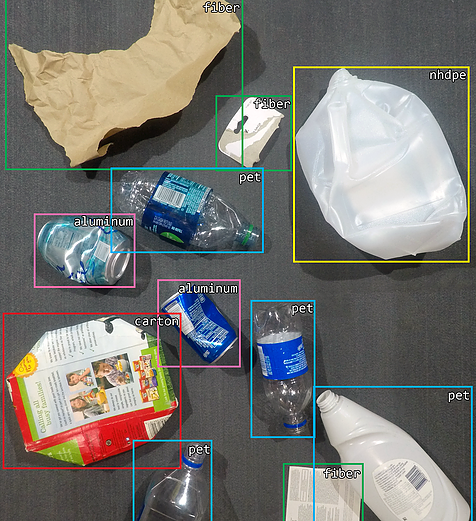
- Sustainable Planet -
- 2mins -
- 380 views
Meet ‘Clarke’ – the Recycling Robot who uses Artifical Intelligence to sort through tons of trash
Recycling facilities are using robotic sorting stations and object-recognition technology to identify and sort recyclable waste materials into their proper place.
Artificial Intelligence – the future of recycling?
Using an advanced vision system and deep-learning AI capabilities, a robot called ‘Clarke’ is now picking an average of one carton per second off a container line at a materials recovery facility in Denver, Colorado, and this could be an early look at the future of plastics sorting, at least until we can chemically engineer better biodegradables.
Wasteworld: rise of the machines
The first robots to arrive on the waste-management scene came from the Finnish company ZenRobotics, with their robotic waste sorter. Their system used a combination of computer vision, machine learning, and artificial intelligence (AI) to run synchronised robotic arms to sort and pick recycled materials from moving conveyor belts.
The company were also the first to create recycling stations that were tied together in a neural network and the AI learned, from real-time feeds providing data from metal sensors, 3D laser cameras and spectroscopic cameras, to select and sort the right items from the belt.
Next came Spain’s Sadako Technologies, who have been working on an AI-infused garbage sorting system, but on a smaller scale than Zen Robotics. The company also uses proprietary algorithms that connect to a multi-layer neural network system which lives in the cloud.
Now, there’s ‘Clarke’, a recycling robot that uses AI to identify a wide variety of food and beverage cartons so it can grab and separate them from the rest of the recycling. The pilot is a collaboration by the Carton Council and two Denver-based companies, AMP Robotics and Alpine Waste & Recycling.
Source: Forbes

Clarke has constantly improved its recycling skills since installation
According to an article by Resource Recycling, Clarke uses an off-the-shelf robot platform that’s been in use for two decades already, but in other industries. Clarke, installed in 2016, has constantly improved its recycling skills, identifying and grabbing around 60 cartons per minute with near perfect accuracy.
Clarke has been programmed to recognise images from the cartons including logos and package printing which it applies to the next round of sorting and grabbing. The Clarke system has the ability to sort at super-human speeds, diverting material for re-processing that might otherwise end up in landfill.
Its makers say that Clarke’s vision system combined with the ability for recyclers to identify and sort new material better and at the same time, sort on the line alongside human counterparts, will make the difference in the system’s acceptance and adoption in the industry.
Source: Forbes

